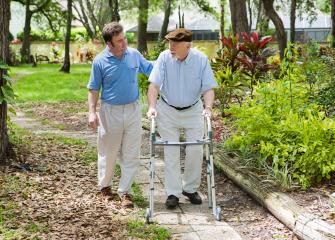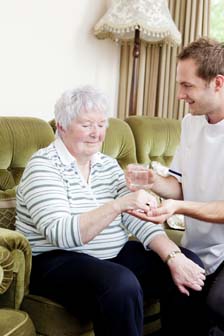Summary
Please enable javascript to play this video.
| Quick Facts: Home Health and Personal Care Aides | |
|---|---|
|
$33,530 per year
$16.12 per hour |
|
| High school diploma or equivalent | |
| None | |
| Short-term on-the-job training | |
| 3,715,500 | |
| 22% (Much faster than average) | |
| 804,600 | |
What Home Health and Personal Care Aides Do
Home health and personal care aides monitor the condition of people with disabilities or chronic illnesses and help them with daily living activities.
Work Environment
Home health and personal care aides work in a variety of settings, including clients’ homes, group homes, and day services programs. Most aides work full time, although part-time work is common. Work schedules may vary.
How to Become a Home Health or Personal Care Aide
Home health and personal care aides typically need a high school diploma or equivalent, but some positions do not require it. Those working in certified home health or hospice agencies may need to complete formal training or pass a standardized test.
Pay
The median annual wage for home health and personal care aides was $33,530 in May 2023.
Job Outlook
Employment of home health and personal care aides is projected to grow 22 percent from 2022 to 2032, much faster than the average for all occupations.
About 684,600 openings for home health and personal care aides are projected each year, on average, over the decade. Many of those openings are expected to result from the need to replace workers who transfer to different occupations or exit the labor force, such as to retire.
State & Area Data
Explore resources for employment and wages by state and area for home health and personal care aides.
Similar Occupations
Compare the job duties, education, job growth, and pay of home health and personal care aides with similar occupations.
More Information, Including Links to O*NET
Learn more about home health and personal care aides by visiting additional resources, including O*NET, a source on key characteristics of workers and occupations.
 United States Department of Labor
United States Department of Labor











